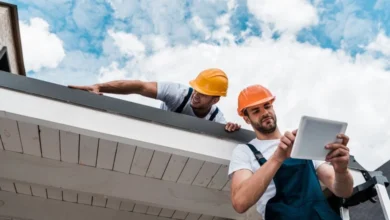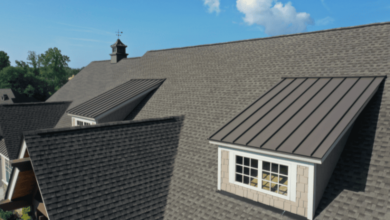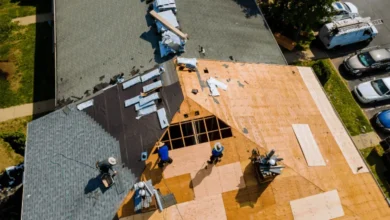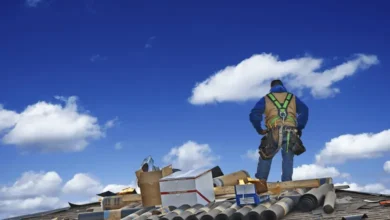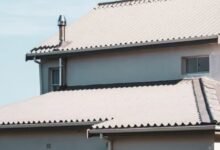Building Better Homes: Insights into New Home Roofing Trends

In the realm of home construction, the roof stands as a symbol of shelter and protection, shielding occupants from the elements while adding aesthetic appeal to the structure. As homeowners embark on the journey of building their dream homes, understanding the latest trends in roofing becomes paramount. From sustainable materials to innovative technologies, the choices available today offer unprecedented opportunities to create homes that are both functional and environmentally conscious. In this insightful exploration, we delve into the evolving landscape of new home roofing trends, providing homeowners with valuable insights to inform their decision-making process.
Sustainable Roofing Materials:
The quest for sustainability has permeated every facet of modern life, including the realm of home construction. As environmentally conscious consumers seek ways to reduce their ecological footprint, sustainable roofing materials have emerged as a popular choice for new home construction.
In recent years, advancements in sustainable roofing technology have expanded the range of options available to homeowners. Solar shingles, for example, harness the power of the sun to generate electricity, providing an eco-friendly alternative to traditional roofing materials. Recycled metal roofs, crafted from reclaimed materials such as aluminum or steel, offer superior durability and resistance to the elements. Similarly, sustainable wood shakes sourced from responsibly managed forests provide a natural and aesthetically pleasing roofing option. Sustainable roofing materials offer homeowners the opportunity to minimize their environmental impact while enjoying the benefits of a durable and long-lasting roof.
The adoption of sustainable roofing materials not only reduces reliance on finite resources but also contributes to energy efficiency and conservation. By investing in eco-friendly roofing solutions, homeowners can lower their utility bills, reduce greenhouse gas emissions, and contribute to a more sustainable future for generations to come.
Energy-Efficient Roofing Solutions:
In addition to sustainability, energy efficiency has become a top priority for homeowners seeking to minimize their environmental impact and lower their utility costs. Energy-efficient roofing solutions offer innovative ways to enhance the thermal performance of homes while reducing energy consumption and carbon emissions.
One of the most prominent trends in energy-efficient roofing is the adoption of cool roofs, which are designed to reflect sunlight and reduce heat absorption. By incorporating reflective materials into the roof’s surface, cool roofs can significantly lower indoor temperatures during hot summer months, reducing the need for air conditioning and mitigating the urban heat island effect.
Green roofs represent another innovative approach to energy-efficient roofing. By covering the roof with vegetation, green roofs provide natural insulation, absorb rainwater, and improve air quality. Not only do green roofs enhance the energy efficiency of homes, but they also create habitat for wildlife, reduce stormwater runoff, and enhance the aesthetic appeal of the property.
As homeowners seek to optimize the energy performance of their homes, roofers play a crucial role in implementing energy-efficient roofing solutions. By working with experienced and knowledgeable roofers, homeowners can ensure that their roofing projects are completed to the highest standards of quality and efficiency.
Modern Roof Designs:
In recent years, there has been a resurgence of interest in modern roof designs that depart from traditional styles and embrace contemporary aesthetics. From flat roofs to butterfly roofs, modern roof designs offer homeowners the opportunity to make a bold architectural statement while maximizing space and functionality.
Flat roofs, characterized by their minimal slope and clean lines, have gained popularity in urban environments where space is at a premium. Flat roofs offer homeowners the flexibility to create rooftop gardens, solar panel installations, or outdoor living spaces, adding valuable square footage to their homes.
Butterfly roofs, with their distinctive upward-sloping wings, have become synonymous with modern design and eco-friendly construction. By capturing rainwater and directing it toward collection systems, butterfly roofs promote sustainable water management while creating striking visual interest.
Shed roofs, characterized by their single-slope design, offer simplicity and versatility in new home construction. Shed roofs are ideal for maximizing natural light and solar gain, making them a popular choice for energy-efficient homes.
As homeowners embrace modern roof designs, they collaborate closely with roofers to bring their vision to life. Experienced roofers possess the expertise and craftsmanship necessary to execute complex roof designs with precision and attention to detail, ensuring that the final result exceeds expectations.
Smart Roofing Systems:
In today’s age of technological advancement, the integration of smart technologies into home construction has revolutionized the way homeowners manage their properties. Smart roofing systems represent a significant innovation in this realm, offering unprecedented capabilities for monitoring, control, and optimization. Equipped with a suite of sensors and connected to intelligent control systems, these cutting-edge roofing solutions provide homeowners with real-time insights into the health and performance of their roofs.
One of the key features of smart roofing systems is the inclusion of moisture sensors, which continuously monitor moisture levels within the roof structure. By detecting leaks or excess moisture early on, these sensors enable proactive maintenance interventions, preventing water damage and mold growth. Additionally, temperature regulation systems built into smart roofs help to maintain optimal conditions within the home, enhancing comfort and energy efficiency.
Remote monitoring capabilities further enhance the functionality of smart roofing systems, allowing homeowners to access critical information about their roofs from anywhere, at any time. Through user-friendly interfaces accessible via smartphones or computers, homeowners can view real-time data on temperature, moisture levels, and energy consumption, empowering them to make informed decisions about maintenance and optimization.
The benefits of smart roofing systems extend far beyond mere convenience. By improving maintenance practices and enabling early detection of issues, these systems help to prolong the lifespan of the roof and reduce the need for costly repairs. Moreover, by optimizing energy consumption and enhancing insulation properties, smart roofing systems contribute to improved energy efficiency and reduced utility costs over time.
Conclusion:
As homeowners embark on the journey of building their dream homes, the choice of roofing materials and designs plays a pivotal role in shaping the overall aesthetic, functionality, and sustainability of the property. By staying informed about the latest trends in new home roofing, homeowners can make informed decisions that align with their values and aspirations.
From sustainable materials to energy-efficient solutions to modern designs and smart systems, the options available to homeowners today are as diverse as they are innovative. By working closely with experienced roofers and leveraging cutting-edge technologies, homeowners can create homes that not only stand the test of time but also contribute to a more sustainable and resilient future.
Pat Baker enjoys sustainable design, loves DIY projects, and writes for roofing companies in the Philadelphia area.

